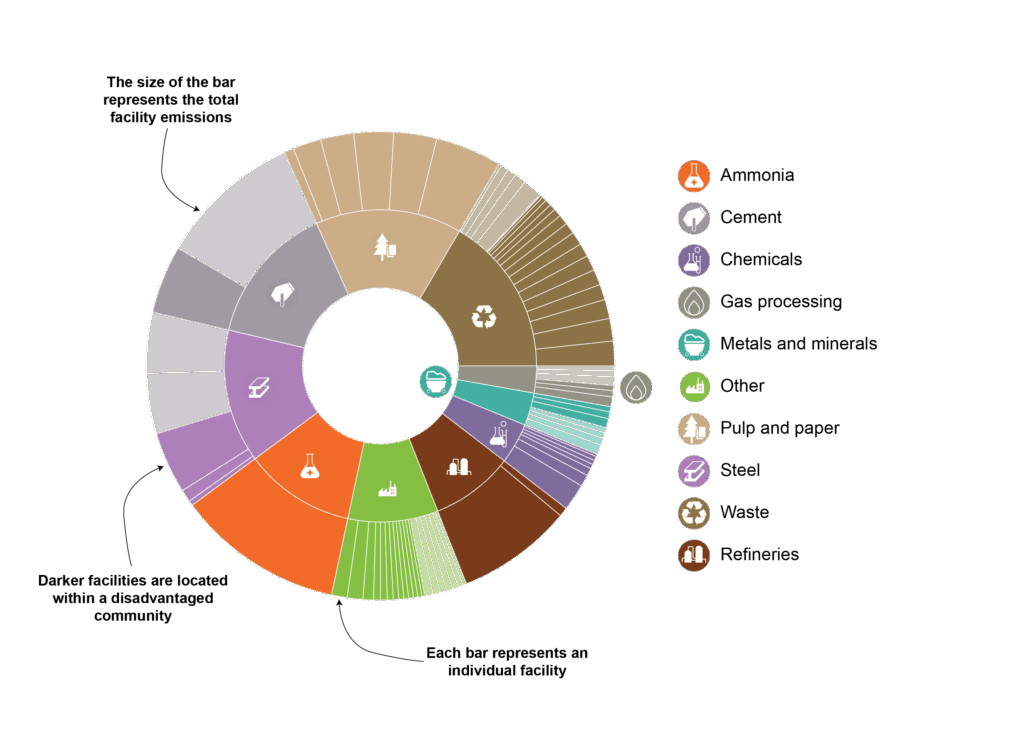Arkansas
Arkansas ranks 30th in the nation in industrial emissions. The highest emitting sectors include chemicals, minerals, waste, and metals. Cement and lime production account for most emissions from the mineral sector. The state’s five steel plants are responsible for virtually all emissions from the metals sector. The state’s three large steel mills are near the Mississippi River in northeastern Arkansas. Refineries and chemical plants are concentrated in Union County on the state’s southern border.

- The top 20 emitters are shown on this map, coded by industrial sector. The size of the circles corresponds to emissions: the larger the circle, the higher the emissions.
- Disadvantaged communities (as determined by the federal government) are shaded blue.

- The inner circle provides a visual representation of the share of emissions generated by each industrial sector.
- The outer circle also indicates the share of a sector’s emissions generated in disadvantaged communities.
STATE ENERGY POLICY:
Considering a state’s broader energy policy landscape is helpful when developing policies to support industrial modernization. Arkansas has not established greenhouse gas emissions targets, an electricity portfolio standard, or a clean heat standard. While these formal commitments are not prerequisites for innovative industrial policy, they can provide a supportive framework. In addition, streamlining permitting and establishing an efficient, transparent appeals process that engages local communities early while giving clarity and assurances to project developers are key components of effective state energy policy. Discussions around innovative industrial policy present an opportunity for broader conversations about state energy policy to ensure a mutually reinforcing strategy.
STATE LEGISLATIVE context & opportunity:
Let us know if you are aware of additional legislation advancing industrial innovation in Arkansas that should be featured. The context below is not exhaustive and serves as an example of recent policies and programs, and where there may be future opportunities:
- Arkansas has enacted and considered several bills in the past few years to establish a regulatory framework for the carbon capture industry in the state to enhance state oversight and provide clarity for developers and investors. Retrofitting industrial facilities in Arkansas with carbon capture technology is one method to significantly reduce the state’s emissions. The first CCS project in Arkansas will be one of the first suppliers of blue ammonia and aims to be operational in 2026. Learn more about industrial carbon capture opportunities in Arkansas.
Explore recent legislation in Arkansas and all 50 states by clicking on a specific year: 2025 legislation, 2024 legislation, 2023 legislation.
